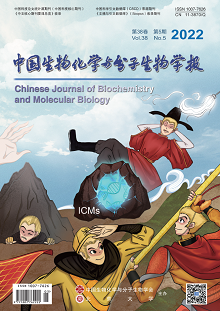YANG Zhe, NI Yue-Li, WANG Shu-Jie, LIU Wen-Jing, ZHU Yu-Zhi, CHE Rong, DUAN You-Bin, KUANG Ying-Min, ZHU Yue-Chun, ZHANG Qiao
Clear cell renal cell carcinoma (ccRCC) has been proved to be a metabolic disease with high metastasis rate and poor prognosis. Effective molecular markers for diagnosis, treatment and prognosis are very important for this disease. Glucose 6-phosphatedehydrogenase (G6PD) was highly expressed in ccRCC and suggested a poor prognosis. The molecular mechanism of its promotion of ccRCC cell proliferation needs to be unraveled. The purpose of this study was to investigate the regulatory effect of G6PD on the expression of Cyclin E1 and CDK2, and to reveal the prognostic value of G6PD, Cyclin E1 and CDK2 in ccRCC patients. Our results demonstrated that decreasing G6PD could inhibit G1/S phase transformation and ccRCC cell proliferation. G6PD regulated the expression of G1/S phase transformation and proliferation related genes, including Cyclin D1, CDK4, CDK6, Cyclin E1 and CDK2. Through TCGA dataset mining, the results showed that compared with the normal control group, the mRNA levels of Cyclin D1, Cyclin E1 and CDK2 were significantly increased in ccRCC, but the expression of CDK6 was significantly decreased and no change of the expression of CDK4. G6PD was negatively correlated with Cyclin D1 (P<0.0001). There was no significant correlation between G6PD and CDK4 or CDK6 (P>0.05). G6PD and Cyclin E1 (P<0.0001), G6PD and CDK2 (P<0.05) were positively correlated. The results of immunohistochemical analysis demonstrated that Cyclin E1 and CDK2 protein expression levels were significantly increased in ccRCC tumor tissues compared with adjacent normal tissues. Kaplan-Meier and Cox regression analysis showed that high expression of Cyclin D1 rather suggested a better overall prognosis in ccRCC patients, and the expression levels of CDK4 and CDK6 were not significant in predicting the overall survival rate of ccRCC patients. However, high expression of Cyclin E1 and CDK2 indicated poor prognosis in ccRCC patients. Further cell model analyses indicated that decreased expression of Cyclin E1 and CDK2 could significantly reverse the ability of G6PD in promotion of ccRCC cell proliferation. Taken together, compared with the proliferation related factors, including Cyclin D1, CDK4 and CDK6, G6PD tends to upregulate the expression of Cyclin E1 and CDK2 and promotes ccRCC tumor proliferation. The abnormal high expression of these three factors is expected to be an independent survival predictor of poor prognosis in ccRCC patients.
